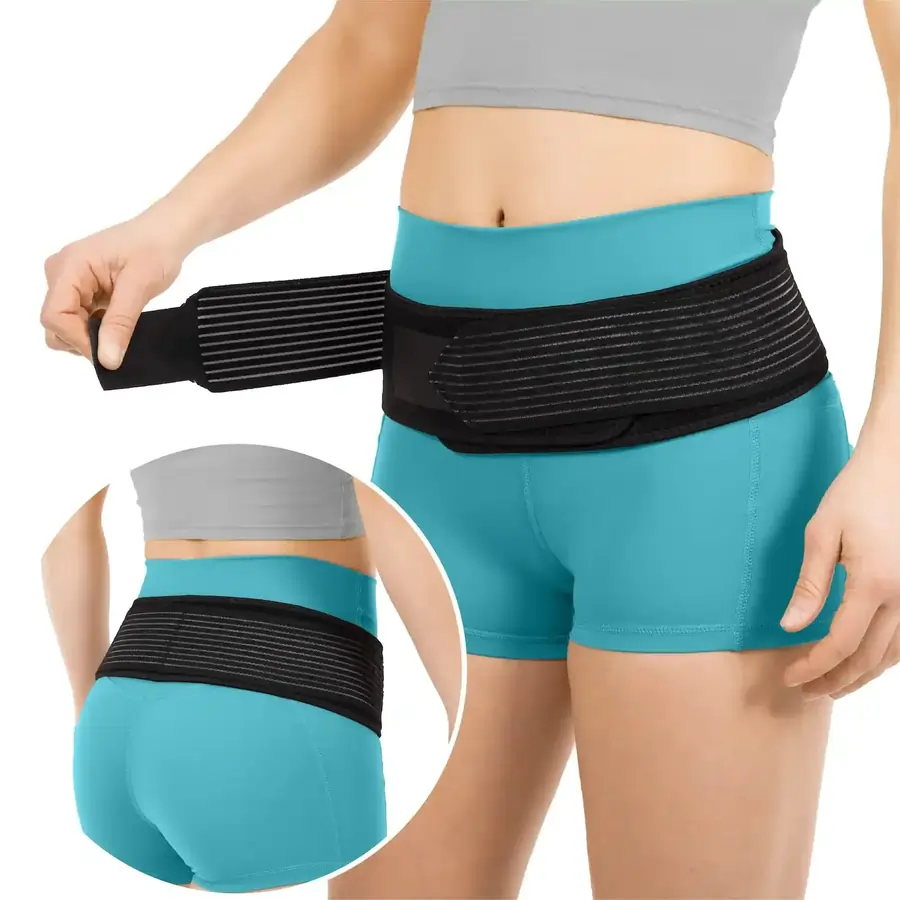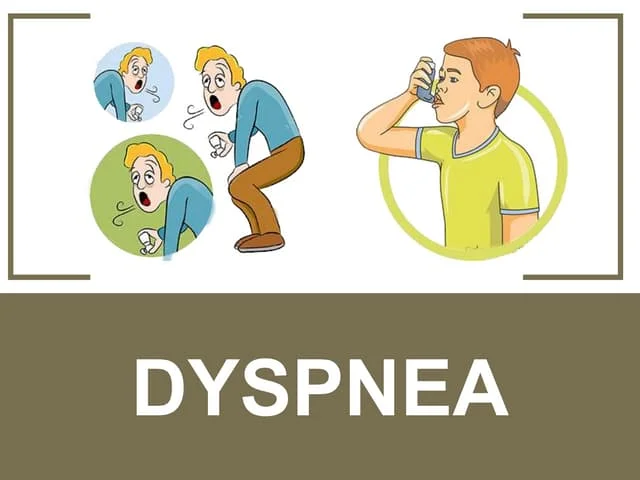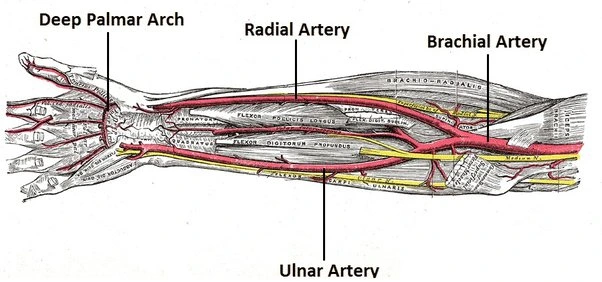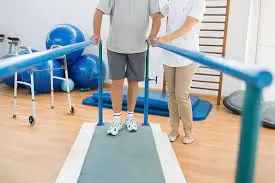Anterior pelvic Tilt Brace
An anterior pelvic tilt brace is designed to support the lower back and pelvis by encouraging a neutral pelvic position. It helps reduce excessive arching in the lower back, alleviating strain on the lumbar spine and hip flexors.
These braces are often used in posture correction, rehabilitation, and pain management. They work best when combined with strengthening and stretching exercises targeting the core, glutes, and hamstrings.
Rotating or tilting your pelvis forward is a frequent condition known as anterior pelvic tilt. About 85% of men and 75% of women are impacted. This bad posture can lead to a number of health issues.
The Negative Impact of Anterior Pelvic Tilt
- Back pain, including a stabbing feeling between your pelvis and rib cage, and an abnormal curve of the lower back (lordosis)
- A protruding stomach and weak abdominal muscles
- Pain in your groin that is not specific
- Hip joint pain
- Hamstring sprain risk and overstretched hamstrings (the muscles on the back of the thighs)
These alterations can lead to poor posture and raise your risk of injury, particularly when working out. Additionally, it may result in issues with your spinal discs.
A sedentary lifestyle, excessive sitting, and bad posture are some of the reasons of anterior pelvic tilt. These elements may result in weak buttocks and hamstring muscles that are unable to resist the pressure of tight hip flexors dragging the pelvis downward.
Causes
- Hip flexor shortening and hip extensor lengthening are the causes of anterior pelvic tilt. This causes the upper back and lower spine to become more curved.
- The muscles that connect the bone in the thigh to the pelvis and lower back are called hip flexors. They are used for kicking, running, and hip bending.
- Three of the four muscles that make up the hip extensors are collectively referred to as the hamstring muscles, along with the gluteus maximus. They aid in hip extension.
- Anterior pelvic tilt is also caused by weak stomach muscles.
- Long periods of sitting are frequently the cause of the shifting curvature of the spine and the resulting muscular imbalances. Anterior pelvic tilt might also result from a lack of stretching or strengthening activities.
Risk factors
The following are risk factors for anterior pelvic tilt development:
- Long periods of sitting,
- inactivity,
- bad posture, and
- genetics
Signs and symptoms
Although an anterior pelvic tilt may not create any symptoms, it can lead to a bent spine and poor posture.
Anterior pelvic tilt is frequently accompanied by no symptoms. Those who have symptoms might observe:
- stiff muscles in the thighs and pelvis
- weak stomach and gluteus maximus muscles
- bad posture with a bulging stomach and a bending lower spine
- Although lower back, hip, or knee pain is frequently mentioned as a symptom, there isn’t much proof that anterior pelvic tilt is the source of this.
Advice for prevention
The risk of anterior pelvic tilt may be decreased by following these suggestions.
- Be careful of extended periods of sitting. People who work desk jobs or other employment that need them to sit for extended periods of time should take regular breaks to stretch or go for walks.
- Take part in regular exercise. Exercises for strengthening and stretching should be a part of this.
- Maintain good posture, particularly when seated. A workstation, screen, and seating arrangement that is both comfortable and healthful is crucial.
Methods for Assessing Anterior Pelvic Tilt
Measuring the angle between your anterior superior iliac spine (ASIS) and posterior superior iliac spine (PSIS) is a very easy process.
How do you do this, then? You can either ask a friend for assistance or stand sideways in front of a mirror.
- Step 1: Find your PSIS. These are located directly beneath your lower back’s dimples.You will feel a bony protrusion on each side if you move your fingers slightly to the left and right.
- Step 2: Find your ASIS. These are located in front of your hips, at roughly the same level as the PSIS. Since they are fairly bony, you should have no trouble finding them.
- The third step is to picture a line joining your PSIS and ASIS.
It’s time to evaluate:
An anterior pelvic tilt may be present if your descending line is significantly larger, upward of 2 inches. Remember that women often have a greater anterior pelvic tilt than men, and that there is a little descending line (about ½ inch) between the PSIS and ASIS by nature.
How to Adjust the Pelvic Tilt in the Front
It is crucial to address the muscle imbalance by strengthening the weaker muscles and releasing/stretching the tense ones in order to correct an anterior pelvic tilt. Let’s examine the muscles that we will be working.
The following muscles are tense: –
Hip flexors (tensor fascia latae, iliacus, rectus femoris, and psoas)
The quadratus lumborum, multifidus, erector spinae, and latissimus dorsi are the back extensors.
Core muscles (rectus abdominus, internal and external obliques, and transverse abdominus) are among the weaker muscles.
The gluteus maximus, medius, and minimus are the gluteal muscles.
Corrections
A range of stretching and strengthening activities can be used to progressively bring the pelvis back to a neutral position in situations of anterior pelvic tilt. These workouts consist of the following:
Child’s Pose:
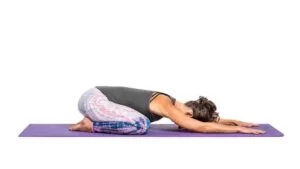
This stretch helps release the back muscles, including the Latissimus dorsi, which are typically tense during anterior pelvic tilt. To perform it, start on your hands and knees on the floor with your knees slightly wider than your hips.
Then, bend your knees and turn your toes inward to push your hips backwards. Once you’re comfortable, straighten your arms forward and let your head fall forward into a relaxed position. Hold this position for 15 to 20 seconds, then slowly return to the starting position. Three repetitions is the goal.
Cow and Cat
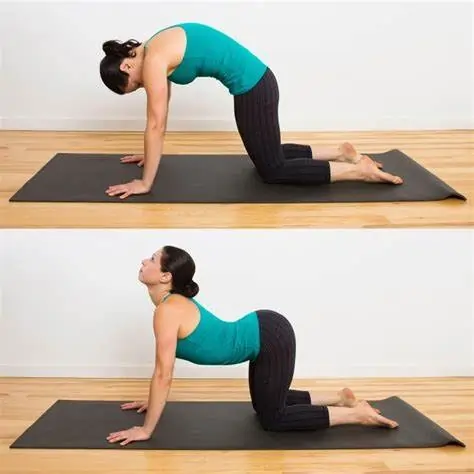
This stretch helps in loosening the tense back muscles (Erector Spinae) associated with anterior pelvic tilt.
Begin this stretch by getting down on your hands and knees.
As you look up at the ceiling, take a breath and let your stomach to “drop” towards the floor.
- Exhale, then slowly rotate your spine while pressing your hands into the floor and bending your neck slightly to gaze at your feet.
- Try to perform this stretch five times.
Warrior 2 Pose
- This position opens up the hips, including the TFL muscle, and strengthens the legs
- How to accomplish it:
- Bend your right knee over your right ankle and bring your right toes toward the wall on your right to start from the Five Pointed Star position.
- Reach out to the walls on either side while turning your hips and shoulders forward.
- Look in the direction of the middle finger on your right hand.
Maintaining the strength of your legs, press into your feet.
To assist stretch your spine, lower your hips toward the floor and reach for the top of your head. - Press your chest upward while letting your shoulders drop and back.
Maintain this posture for a maximum of 60 seconds.
Resuming the five-pointed star stance, slowly straighten your legs and turn your feet forward.
Double Knee to Chest
- By stretching the spine extensors, which are frequently tense in people with anterior pelvic tilt, this stretch helps to release tension in the lower back.
- How to accomplish it:
- Start by placing your feet level on the floor and bending your knees while resting on your back on a mat.
- Pull your right knee slowly in toward your chest with your right hand behind it, then bring your left knee in toward your chest.
- Maintain this posture for fifteen to twenty seconds.
- Unwind and gradually return to the beginning position, lowering one leg at a time.
- Try to do this stretch three times.
Squats
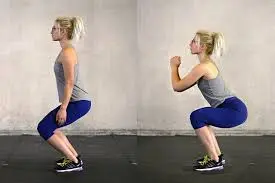
- A person’s posture can be improved by strengthening their buttocks and leg muscles.
- The hamstrings, buttocks, and other leg muscles are strengthened with squats.
- Extend the toes a little.
- Maintain a neutral back posture while applying pressure to the stomach muscles.
- Inhale. To get the thighs parallel to the floor, bend the knees by lowering the hips back and down.
- The heels should be firmly planted on the floor, and the knees should not go past the toes.
- Exhale and slowly move back to the beginning position.
- Do this ten to twenty times.
Tilt of the pelvis
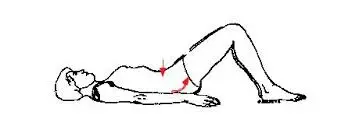
- The abdominal muscles are strengthened by this workout.
- With your knees bent and your face up, lie on the floor.
- The back should be flat against the floor as you contract the abdominal (stomach) muscles. Raise the pelvis a little.
- Maintain this posture for ten seconds or more.
- Five sets of ten repetitions should be performed.
- Raising the back leg while kneeling
- This exercise strengthens the muscles in the stomach while stretching the muscles in the back and buttocks.
- On an exercise mat, start on your hands and knees. The knees should be positioned squarely beneath the hips, and the hands beneath the shoulders. The hands and knees should bear an equal amount of weight.
- Tighten the muscles in your stomach.
- Maintaining the right leg straight and the toes pointing, bring it back into alignment with the body. Avoid arching your back.
- Keep the leg in place for five seconds. Reduce and do it ten times.
- Repeat the previous step with the other leg after switching sides.
Hip flexor stretch while kneeling
- Tight hip flexor muscles can be lengthened and loosened with this stretch.
- Make sure the right knee is exactly above the right ankle when you kneel on the left knee.
- For support, place both hands on the right thigh. Make sure the spine is straight and tall.
- Maintain a neutral pelvic position while contracting the muscles in your stomach and buttocks.
- Make sure your back and pelvis stay stable as you lean forward into your right hip. The inner thigh and hip flexors should both be stretched.
- For 30 seconds, maintain this posture. Try to stretch a little bit more with each of the five repetitions.
- To extend the opposite hip, switch sides and follow the same procedure.
The bridge of the glutes
- This workout focuses on the hamstrings and buttocks.
- With your knees bent and your face up, lie on the floor.
- The feet should be hip-width apart.
- Squeeze the muscles in your tummy until your back is flat on the ground. Throughout the exercise, maintain your abdominal muscles active.
- Exhale and raise your hips off the ground so that your thighs and upper torso are in a straight line.
- Take a deep breath and softly drop to the ground.
- Do this ten to twenty times.
The plank
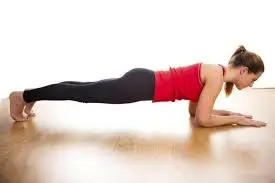
- Although performing a plank may be challenging at first, participants should aim to maintain the position for as long as they can, eventually up to one minute.
- The back and stomach muscles are targeted by the plank workout.
- On an exercise mat, lie face down.
- Palms down, place the hands on the mat. The hands should remain precisely beneath the shoulders.
- Tighten the muscles in your thighs and tummy.
- Ascend slowly into a push-up position by raising your thighs and upper torso off the floor. Maintain a straight and rigid body. Throughout the workout, make sure your abdominal muscles are working.
- Try to hold the plank position for as long as you can, up to 60 seconds. Gently bring the body down to the floor.
Dead Bug
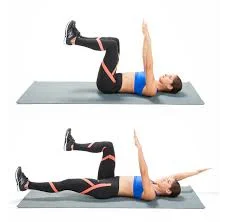
In addition to strengthening the deep core, this exercise helps to stabilize the hips and trunk.
How to do it:
- Start by extending both arms toward the ceiling while resting on your back. Raise your legs to a 90-degree angle off the ground.
- In order to flatten your back onto the floor, rotate your pelvis upwards, brace your core muscles, and exhale to bring your ribs down. This is the starting posture for the exercise, which you must maintain throughout the movement.
- Lower your right arm back to just above the floor while you begin the exercise by extending your left leg, straightening at the knee and hip, and bringing the leg down to just above the floor (don’t allow your lower back arch).
- Return your right arm and left leg to the beginning position while maintaining a taut abdominal and gluteal muscle.
- Do the same with your left arm and right leg.
- For twenty repetitions, switch sides.
Dog Bird
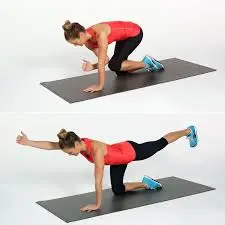
- This is an excellent workout to strengthen your lumbar back muscles and core.
- How to accomplish it:
- Start on your hands and knees, placing your knees beneath your hips and your hands beneath your shoulders.
- Before starting any movement, brace (contract) your core as firmly as you can.
- Lift your left arm and reach it forward until it is in line with your chest while bracing your core. Kick your right leg backwards until it is in line with your torso likewise.
- When doing this, it’s crucial to avoid arching your low back.
- Return to the starting position gradually after holding this position for two to three seconds.
- Do ten reps on each side.
- Avoid arching your low back and only extend your arm and leg as far as it feels comfortable.
Anterior pelvic tilt brace
Anterior Pelvic Tilt Brace Types
People with anterior pelvic tilt (APT), a postural problem in which the front of the pelvis is tilted downward and the back is slanted upward, can benefit from using a brace to assist manage or rectify the condition. Numerous musculoskeletal disorders, such as lower back discomfort, hip pain, and knee and ankle problems, can result from this posture. The following brace types are frequently employed for this purpose:
Belts for the hips
The pelvis can be stabilized and supported with the use of hip belts. They can help realign the pelvis to its neutral position when worn around the hips. For those whose anterior pelvic tilt is linked to hip mobility problems, this can be especially helpful.
LSO, or lumbar sacral orthosis
An LSO brace can help correct APT by supporting the pelvis and lower back. It helps to keep the spine’s natural curvature and the pelvis in a more neutral position by supporting the lumbar region and the sacral portion of the pelvis.
Brace for Posture Correction
To assist in pulling the shoulders back and down, a posture corrector brace can be worn around the chest and over the shoulders. This can help lessen the excessive lower back curvature, or lumbar lordosis, that is frequently linked to APT. The bracing’ design allows for adjustment.
Orthosis of the Pelvic Dynamic
The purpose of this kind of brace is to give the pelvis dynamic support and correction. Usually, it comprises of a harness system that is fastened to the pelvis and linked to a ground-anchored base. The force vector produced by this arrangement aids in stabilizing the pelvis in a neutral posture and realigning it.
Personalized Orthotics
These are customized shoe inserts made to meet the unique requirements of each person. By giving the feet the proper support and alignment, they can aid in the correction of biomechanical problems associated with APT, which in turn impacts the pelvic and lower back.
How to pick an anterior pelvic tilt brace
An important first step in controlling and resolving posture problems associated with anterior pelvic tilt (APT) is choosing the appropriate anterior pelvic tilt brace. APT results in an accentuated lumbar curve and a number of musculoskeletal issues when the front of the pelvis tilts downward and the back tilts upward.
The brace is a supporting device that helps with posture correction, pelvic realignment, and pain relief. When selecting an anterior pelvic tilt brace, keep the following important considerations in mind:
Speaking with a Healthcare expert:
It’s crucial to speak with a healthcare expert, such as an orthopedic specialist, chiropractor, or physical therapist, prior to selecting an anterior pelvic tilt brace. They are able to determine the extent of the posture problem, spot any underlying musculoskeletal issues, and offer tailored advice on the best kind and kind of brace.
Type and Design of Braces:
For correcting anterior pelvic tilt, braces of several kinds are available, such as sacroiliac (SI) joint belts, posture correctors, and pelvic belts. Every kind has a unique function and provides varying degrees of assistance. For instance, whereas posture correctors concentrate on enhancing general posture, pelvic belts and hip braces are made to realign the pelvis.
Adjustability and Customization:
To match a certain body shape and size, look for a brace that is both adjustable and customizable. Effective correction requires the ability to modify the tightness and support levels because anterior pelvic tilt can vary in severity and impact people differently.
- Quality & Durability: Select a brace composed of sturdy, long-lasting materials that can tolerate frequent use. Seek out braces with strong fastening systems, reinforced stitching, and breathable materials. Purchasing a high-quality brace can guarantee improved support and more durable outcomes.
- Comfort and Mobility: Because an anterior pelvic tilt brace must be worn for extended periods of time, comfort is crucial. Choose a brace that offers sufficient support without being uncomfortable or limiting movement. To improve comfort and mobility, look for features like breathable fabrics, ergonomic design, and padded straps.
- Integrated Support Features: Some braces have built-in support components that might offer more comfort and stability, such silicone inserts or lumbar support pads. If you have lower back pain or discomfort related to anterior pelvic tilt, think about wearing braces with these features.
Functions
- Posture Support: Good posture depends on the pelvis and spine being properly aligned, which is something that the brace helps to maintain. It encourages a neutral pelvic position and stops excessive anterior tilting by supporting the pelvis. For people who spend a lot of time sitting or doing activities that cause them to have bad posture, this function is crucial.
- Pain Relief: The purpose of these braces is to alleviate anterior pelvic tilt-related lower back, hip, and knee pain. They accomplish this by reducing pressure on the intervertebral discs, encouraging improved spinal alignment, and easing the strain on the muscles and ligaments. Those who suffer from musculoskeletal pain or postural disorders would especially benefit from this feature.
- Rehabilitation: In order to address postural imbalances, anterior pelvic tilt braces are utilized as instruments in rehabilitation programs. They improve stability and function by helping to strengthen the muscles supporting the lower back and pelvis. For people who are recuperating from accidents or who require corrective measures to address postural concerns, this function is essential.
Qualities
- Adjustable Straps: The majority of braces have straps that may be adjusted to suit the user’s comfort and support requirements. This function guarantees that the brace stays firmly in position and provide the required support and compression.
- Lumbar Support: A lot of braces have built-in lumbar support, either with contoured design components or padded inserts. This function is intended to give the lower back area more support, which will lessen the pain and discomfort brought on by lumbar spine disorders.
- Breathable Materials: Braces are frequently made of breathable materials like mesh panels, moisture-wicking textiles, and ventilated designs to improve comfort, particularly during extended wear. By keeping the skin pleasant and dry, this function lowers the chance of irritation or overheating.
Design
- Contoured Design: In order to accommodate the natural curve of the lower back and pelvis, braces for anterior pelvic tilt are frequently made with a contoured shape. This design improves comfort and efficacy by giving the afflicted areas appropriate support and pressure alleviation.
- Multi-Panels: A number of panels that offer compression and support make up the multi-panel design of certain braces. This design is appropriate for people with different degrees of anterior pelvic tilt and related discomfort because it offers more accurate support and better adaptation to the contours of the body.
- Easy Wear: People with mobility concerns or those undergoing rehabilitation may find these braces to be a convenient alternative because they are usually simple to put on and take off. This aspect of the brace’s design guarantees that users may easily and comfortably integrate it into their everyday routine.
FAQs
Can other postural problems be resolved with an anterior pelvic tilt brace?
Unfortunately, no. Every posture problem is different and needs a different kind of brace to be fixed effectively. Therefore, without expert advice, a brace made for anterior pelvic tilt might not be appropriate for addressing other postural problems.
When using a brace, how long does it take to see a change in posture?
The length of time varies based on how severe the condition is and how consistently the brace is used. Usually, within a few weeks or months, consumers may begin to observe measurable changes. However, other remedial methods should be employed in addition to the brace.
Is it possible to wear an anterior pelvic tilt brace while exercising or engaging in physical activity?
Some braces are made especially to be worn during exercise or physical activity. However, it’s crucial to pick the appropriate brace type and speak with a medical expert to make sure it fits your activity level and won’t limit your range of motion or result in harm.
Are pelvic braces effective?
Narrower belts that wrap around your pelvis, between your hip and leg bones, are called sacroiliac (SI) joint braces or pelvic braces. For people who are more hyperflexible and whose pain radiates down into their glutes or pelvis instead than just their spine, they can be a terrific way to provide some support.
What is the name of a pelvic brace?
When someone has a pelvic fracture, a pelvic binder is a tool used to compress the pelvis. It supports and stabilizes the pelvic area and lessens pain during movements. The Aukris pelvic binder is useful for post-trauma, post-surgery, and pelvic fracture applications.
Is it possible to permanently correct pelvic tilt?
Although APT can be resolved, some people may need to put in more effort than others in order to resume their regular lives. In the end, the degree of difficulty will be determined by the patient’s objectives, skill level, and the degree of postural disruption.
Is sciatica a result of pelvic tilt?
Indeed, the sciatic nerve may be compressed or irritated by misalignments that cause muscle imbalances or deform the spine or pelvis. It’s crucial to align properly.
What advantages does pelvic tilt offer?
Tilts of the pelvis assist offset that posture. Additionally, they strengthen deep core strength to support your body during daily activities like lifting and squatting, and they stretch tight muscles in your lower back to assist relieve back discomfort.
Reference:
- Anterior pelvic tilt. (n.d.-b). Baptist Health. https://www.baptisthealth.com/blog/sports-medicine/anterior-pelvic-tilt
- Leonard, J. (2017, May 11). Six fixes for anterior pelvic tilt. https://www.medicalnewstoday.com/articles/317379#fixes
- McQuilkie, S., DC. (2023, July 3). How to fix anterior pelvic tilt posture – 10 exercises | Back Intelligence. Back Intelligence. https://backintelligence.com/anterior-pelvic-tilt-fix/
- Brace for anterior pelvic tilt – Alibaba.com. (n.d.). https://www.alibaba.com/showroom/brace-for-anterior-pelvic-tilt.html

